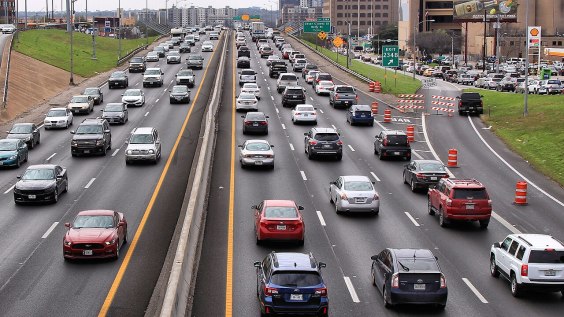C.W. Nevius's column in the Chronicle today ("S.F. a dangerous city for careless pedestrians") is a great example of blaming the victim, ignoring data, and misrepresenting the experts you quote. But it wouldn't be Nevius otherwise, would it?
Here's the gist: Nevius says that high pedestrian collision numbers in San Francisco are the fault of careless pedestrians. How does he know this? Because a man who witnessed a pedestrian fatality on Van Ness last Friday said the woman walked in front of a car that had a green light. Never mind that an MTA collision report for 2007 (PDF)
found that pedestrians are only involved in 26 percent of all injury collisions on San Francisco streets and are only the cause of one third of those collisions, which means drivers are at fault two thirds of the time.
But who has time for rigorous data, when I'm just trying to prove a point in my column, facts be damned?
Nevius also misrepresents Ana Validzic, pedestrian and traffic safety coordinator for the Department of Public Health, who confirms that awareness is hugely important in avoiding collisions. The problem is, he quotes Validzic immediately after a sentence about how pedestrians not paying attention are likely to end up "bouncing off the windshield." He's undoubtedly right about that, but his placement of Validzic's quote implies that she's blaming pedestrians for most crashes.
In fact, she told Streetsblog today, she meant all users of the street need to pay more attention.
"He had heard a previous opinion saying that pedestrians don't pay any attention, and it sounded like it was only the pedestrians' fault," said Validzic. "I was really trying to balance that opinion out by saying, no, I don't think that's true. I think that's true of all users, that there are times where drivers aren't paying attention, where pedestrians aren't paying attention, where anybody else is not paying attention, and then there's a collision because of that, or even a near miss."
While Nevius notes that the city's "narrow, quirky streets" - he's not
referring to Van Ness Avenue, presumably - slow cars down, keeping
pedestrian fatality figures from being even higher, he baffles a bit with his conflicting statements about how engineering can improve the situation.
"Designs by engineers cannot force us to pay attention," Nevius asserts. But shortly after he seems fascinated by "naked streets,"
shared road spaces stripped of most street signs, which he notes can
lead to drastic decreases in collisions by forcing everyone to navigate
the space carefully and be more aware. Sounds promising.
In the end, though, he decides naked streets won't work here because "traffic engineers say the city's traffic grid doesn't work well for roundabouts."
As WalkSF's Manish Champsee points out in a response he wrote to Nevius, there's more hope for naked streets in San Francisco than traffic engineers evidently told Nevius:
While "roundabouts" might not work in much of San Francisco, there is a smaller version of these known as "traffic circles" that are appropriate for neighborhood streets. Berkeley and Seattle have used traffic circles with great success, Seattle seeing many intersections go to 0 crashes. We attempted these in 2004 on Page St., however, they were a failure because the circles weren't large enough as per best practices in other cities.
Regardless of how genuinely interested in traffic calming solutions Nevius is, he never acknowledges that motorists in multi-ton metal vehicles share that burden as much or more than those on foot. He then makes it pretty clear how lopsided his bias is against pedestrians with the accolades he gives the deplorable video above when he linked it on his blog.
Though he concludes that "we will probably just stick with what we have - whizzing traffic, overconfident pedestrians and the blind faith that the two will not collide" fortunately for the people who live in San Francisco, pedestrian advocates aren't ready to admit defeat so quickly.




